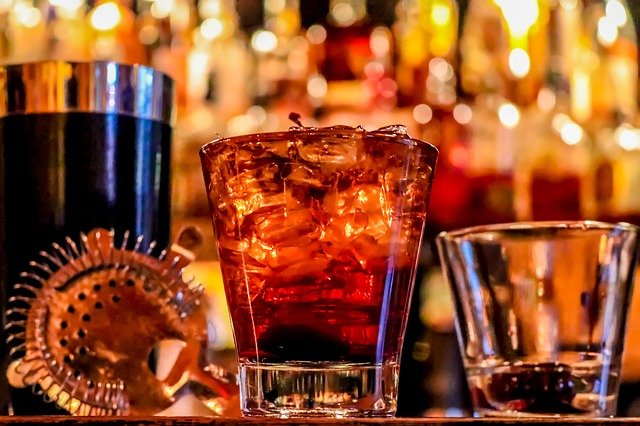In the land of the rising sun and all things kawaii, Japanese whisky is one rising star on the international stage. The Japanese literally stole the limelight when Yamazaki Single Malt Sherry Cask 2013 won the top honour of World Whisky of the Year award in 2015, as listed in the Whisky Bible 2015. It was probably the first time that shocks and gasps were heard around the world as Scotch whiskies were traditionally the winners. To have a ‘foreign’ new kid on the block pull the carpet from under them really made the world sit up and take notice of Japanese whisky.
The Japanese certainly looked up to Scotch whiskey as their whiskey whisperer, so you can say that Japanese whisky is almost like their twin sibling. It is modelled closely on Scotch whisky’s production, ingredients, climate, and even how it is spelt. To pay homage to Scotch whisky, Japanese whisky is spelt without the ‘e’ unlike the American or Irish whiskey spelling.
Table of Contents
Barley
Three key ingredients used in whisky making are water, barley and yeast. The Japanese are strong believers in the quality control of their products, so they uphold this standard to the highest regard. Hence, that is one of the reasons why Japanese distilleries import ingredients from Scotland, e.g. malted or peated barley from the original source, which is the isle of Islay. Strangely, the Scots import their barley from Poland, Germany or USA. It really is a matter of suitability for cultivation.
Yeast
They also use a variety of yeasts to ferment the barley as each strain carries a different characteristic. Just like how Yakult, a cultured milk drink has its own L. casei strain Shirota, similarly, Suntory even created their own unique strain of good bacteria – Suntoryeus lactobacillus.
Water
It is a godsend that Japan has access to clear pristine water sourced directly from the mountains, which often contains minerals as it flows down. In fact, Yamazaki Distillery, now owned by Suntory, uses a ‘mythical’ water from a mountainous region near Tokyo, bringing to mind a bottle of Hakushu Distillery Reserve. Moreover, Japanese distilleries are situated at higher altitudes, resulting in lower pressure, leading to lower boiling points for distilling. This scientific phenomenon helps to retain the flavour and aroma, for better drinking pleasure.
Stills
Zemon, the distillation stills, is uniquely Japanese. Shaped like Bonsho bells in temples, these stills are made of copper-tin alloy instead of full copper, as tin is known to the Japanese to soften the taste of alcohol. Produced through casting and moulding, which creates an irregular surface, it actually increases the contact area of the steam, letting the copper-tin alloy do its magic twice through double distillation.
Casks
Making use of nature’s abundance, Japanese bamboo is used to filter the alcohol. They even use Mizunara wood, found only in Japan, to age their whisky for a minimum of 3 years. Other types of wood such as Sakura are also used. During this time, beautiful flavours such as spice, incense or citrus are slowly imparted into the whisky, resulting in an unforgettable taste.
Climate
In comparison, the climate in Japan is more conducive to making whisky than in Scotland. With hot humid summers and cold dry winters, the weather actually enables whisky to mature and age faster, bringing a deeper complexity to its taste, found in Yamazaki 18 years. In the words of Mr Shinji Fukuyo, chief blender at Suntory Spirits Limited, “The harmony between Japanese craftsmanship and Japanese nature creates the distinctive characteristics of Japanese whisky.”
Blending
Unlike master distillers who call the shots in the western hemisphere, the Japanese master blenders occupy the highest position in the hierarchy. The direction for Japanese distilleries is to produce a wide selection of their own single malts and blends, and use them to create their definitive taste like how Hakushu 18 Single Malt is, so the blending craftsmanship is still within their control. While for Scotch whisky, they source them from other distilleries to create their own branded taste, but the biggest challenge is the consistency of maintaining their taste.
Japanese distilleries are focused to constantly refine and perfect their whiskies, so their flavour profiles lean towards a lighter, more delicate and refined taste, with elegance. To sum up, “Whiskey, like a beautiful woman, demands appreciation. You gaze first, then it’s time to drink,” said Haruki Murakami, author of Japanese postmodern literature.
Where to Buy Japanese Whiskies
If you’re already craving for some of the above mentioned Japanese whiskies, you can begin your tasting journey by shopping with popular alcohol ecommerce retailers in Singapore. A popular choice would be a one-stop alcohol delivery hub such as Cellarbration, where they have a wide selection of alcohols including Japanese whisky at your fingertips while providing quick, hassle free next-day delivery for all orders over 98 Singapore dollars.

